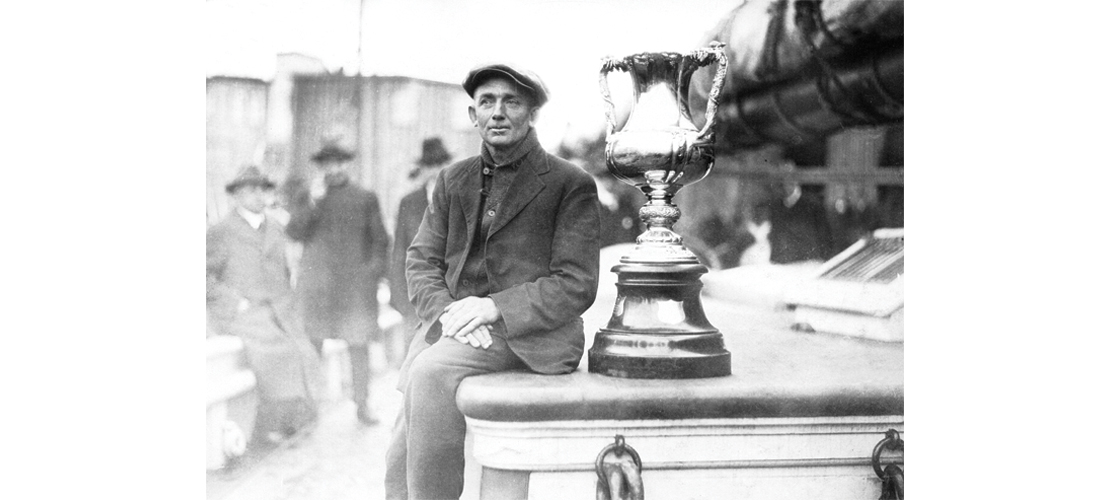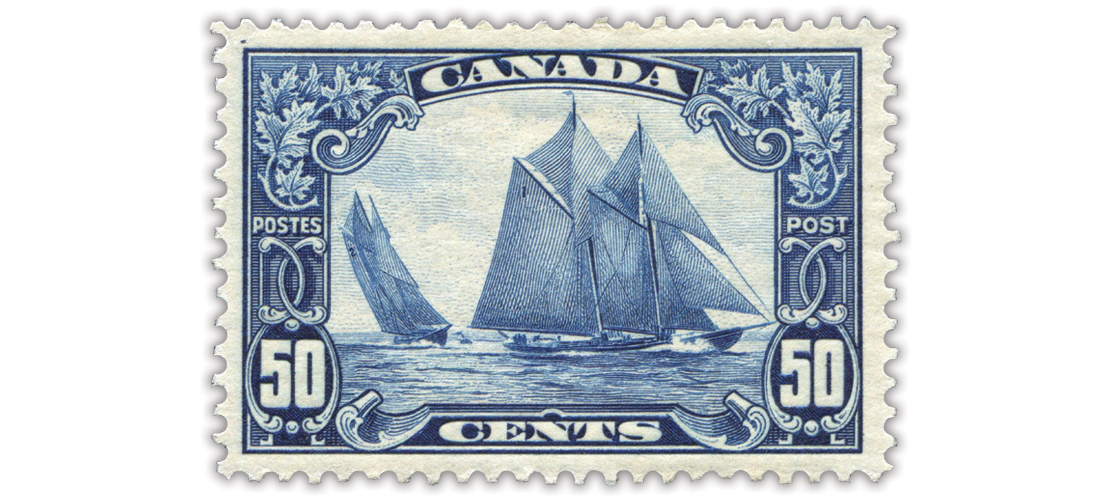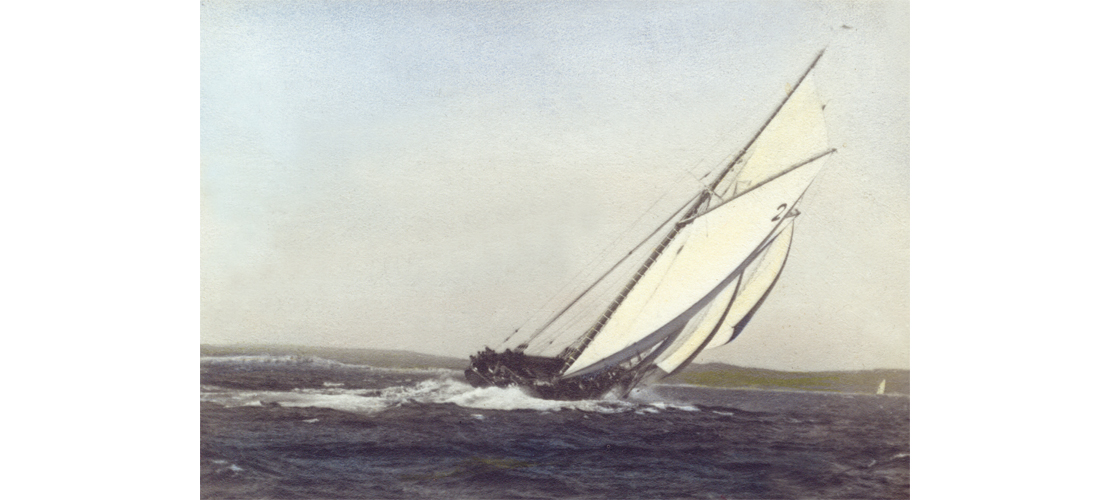New stamps celebrate the fabled Queen of the North Atlantic schooner
In October 1931, the Toronto Daily Star declared Bluenose “queen of the Atlantic fishing fleet.” The vessel had “answered every call and has yet to be defeated” in the International Fishermen’s Trophy series. Captain Angus J. Walters, the paper reported, was “known up and down the coast as the most famous skipper on the North Atlantic seaboard.”
Bluenose was attaining international fame. In 1933, as the fishing and racing schooner sailed up the St. Lawrence River to appear at the World’s Fair in Chicago – with stops for spectators in Toronto and Montréal – the Toronto Evening Telegram wrote: “Her name is a household word. She has knit Canada together.”
The small group of Nova Scotians who set out to build a faster fishing and racing vessel in the early 1920s had created one of the finest on the seas in the 1920s and ’30s. Their schooner, from Lunenburg, N.S., would become a symbol of Canadian ingenuity, craftsmanship and seafaring skills on the global stage – and a beacon of pride for Canadians.
Launched a century ago, Bluenose was born of a rivalry between the fishing communities of Lunenburg and Gloucester, Mass. Competition over whose fishing vessels were the fastest led to the creation of the International Fishermen’s Trophy race in 1920. The race was limited to vessels that had spent at least one season commercial deep-sea fishing on the Grand Banks.
To their dismay, the Canadians lost that first competition to their Massachusetts rivals. Following their defeat, a group of Nova Scotians set out to build a faster ship to challenge the Americans. Amateur naval architect William J. Roué of Dartmouth began designs for their new schooner.
Roué worked through the fall of 1920 to perfect his masterpiece. Constructed of Nova Scotia oak, pine, birch and spruce, and with towering masts of Douglas fir, Bluenose took shape over the winter at the Smith & Rhuland Shipyard in Lunenburg. Its name proudly came from a nickname for Nova Scotians dating back to the late 18th century. On March 26, 1921, hundreds of spectators watched as the vessel officially launched from the shipyard.
After Bluenose’s first season of fishing on the Grand Banks in 1921, the crew set sail to compete for the International Fishermen’s Trophy in the fall. With Captain Walters at the helm, Bluenose handily won its first trophy, and remained undefeated over 17 years in four subsequent trophy series: 1922, 1923, 1931 and 1938.

“These kinds of things only happen once in a lifetime, and that’s why it’s so important we celebrate Bluenose’s 100th birthday,” says Joan Roué, great-granddaughter of the famous vessel’s architect. “As proud as I am of my great grandfather, he was only one cog in that wheel. It was a perfect storm. It was him. It was Angus Walters, the best captain on the seas at that time. It was the crew, it was the builders. It took everything together to make her the vessel that she was.”
Bluenose became recognized internationally as the fastest fishing schooner in the North Atlantic. In honour of the vessel, Canada Post issued a Bluenose stamp in 1929. Generations of collectors still consider the stamp one of the most beautiful ever produced, largely owing to its traditional, hand-engraved detail.
In its early years, Bluenose continued fishing – bringing in some of Lunenburg’s largest catches, including a record 213 tonnes in 1923. Later, during the Great Depression, the vessel’s fame opened the door to charter cruises and tours. In 1935, the schooner sailed across the Atlantic to represent Canada at King George V’s Silver Jubilee.

Canada’s most recognized sailing vessel, Bluenose continues to feature prominently in Canadian culture. It is immortalized in song by folk legend Stan Rogers, featured on Nova Scotia’s licence plate and has adorned the 10-cent coin almost exclusively since 1937. A replica, Bluenose II, was built in 1963.
Bluenose met a fate similar to other Nova Scotia schooners of its time – serving as a freighter in the Caribbean. In 1942, the West Indian Trading Company purchased the vessel to haul goods between the islands and the United States. The day it left Lunenburg for good, Captain Walters is said to have wept as he watched from the waterfront. Bluenose struck a coral reef and sank off the coast of Haiti in 1946.

Canada Post marks 100th anniversary of Bluenose’s launch
Available now